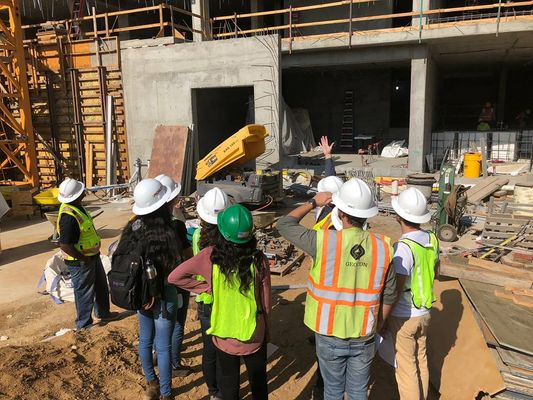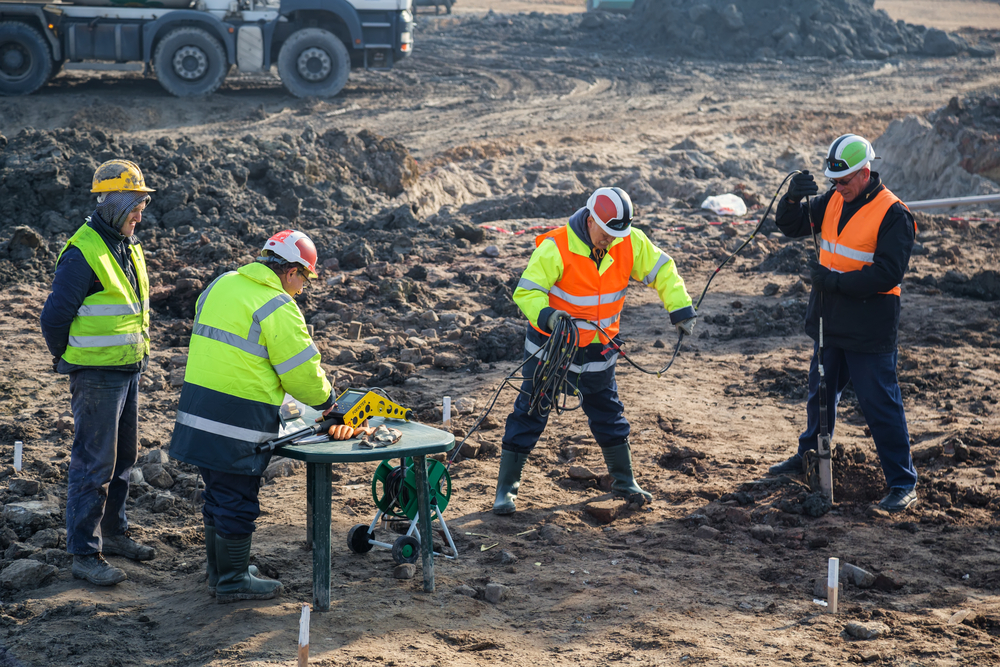Patterns Influencing the Future of Geotechnical Eng Practices
Wiki Article
A Detailed Introduction of the Key Duties of Geotechnical Engineers in Site Characterization and Ground Renovation Methods for Design Solutions
Geotechnical designers are indispensable to the effective implementation of engineering jobs, entrusted with the critical responsibilities of website characterization and the application of ground improvement methods. Their job involves a detailed analysis of subsurface conditions, utilizing numerous testing techniques to recognize soil and rock buildings. This foundational understanding not just notifies style choices yet also reduces prospective dangers associated with ground instability. As we check out the complex roles of these specialists, it comes to be apparent just how their expertise forms the safety and security and performance of design services. What particular methods and evaluations attract attention in this essential discipline?Function of Geotechnical Designers
Geotechnical engineers play an essential duty in the style and building and construction of infrastructure by examining the actions of dirt and rock under the surface - geotech engineer. Their responsibilities encompass assessing subsurface problems to educate design choices that make sure architectural stability and safety. By conducting detailed evaluations of soil buildings, consisting of shear compressibility, toughness, and permeability, geotechnical designers supply essential data that affects the choice of appropriate construction materials and techniquesIn addition to analyzing soil auto mechanics, geotechnical designers are tasked with determining possible risks such as landslides, sinkholes, and ground negotiations. Their proficiency aids alleviate threats connected with these geotechnical sensations, consequently shielding both the atmosphere and public safety and security. They also work together very closely with other design disciplines, making certain that geotechnical factors to consider are integrated into general task style.
Furthermore, geotechnical engineers take part in the assessment of existing frameworks, providing recommendations for retrofitting and fixings when needed. Their comprehensive understanding of soil-structure communication is necessary for the growth of lasting framework remedies. Generally, the role of geotechnical engineers is important to the successful realization of building and construction projects, guaranteeing they are risk-free, resilient, and compliant with regulative requirements.

Site Characterization Procedures
Effective site characterization procedures are vital for understanding the subsurface problems that affect task design and implementation. Geotechnical engineers utilize a systematic strategy to gather, review, and translate data regarding rock, soil, and groundwater attributes. This procedure starts with a thorough review of existing literary works and archaeological site information, supplying understandings into previous website conditions and possible difficulties.
Data analysis adheres to fieldwork, where designers make use of geostatistical approaches to analyze searchings for and create geological versions. With persistent site characterization, geotechnical engineers lay the groundwork for effective task implementation, reducing unanticipated complications and enhancing resource allowance.
Dirt and Rock Screening Methods
While recognizing subsurface conditions is important, the choice of ideal soil and rock screening methods is just as important for exact evaluation and style. Geotechnical designers employ a selection of testing methods to evaluate the physical and mechanical residential or commercial properties of soil and rock materials.Research laboratory tests, such as Atterberg restrictions, grain dimension evaluation, and unconfined compressive stamina examinations, give necessary data on soil behavior under various dampness problems and packing scenarios. These tests assist figure out soil classification and forecast negotiation or shear strength characteristics critical for structure design.
In-situ testing methods, consisting of Criterion Infiltration Tests (SPT), Cone Infiltration Tests (CPT), and pressure meter examinations, permit designers to gather data directly from the ground. These techniques offer important insights right into the dirt's density, consistency, and stratification without the demand for substantial tasting.
Rock testing generally involves core tasting and laboratory analysis to analyze homes like uniaxial compressive stamina and rock quality designation (RQD) With each other, these dirt and rock testing methods allow geotechnical designers to make informed decisions regarding site-specific challenges, making certain the security and security of design services.
Ground Improvement Techniques
Ground improvement strategies are important for improving the engineering homes of soil, thereby boosting its load-bearing capacity and lowering negotiation. These approaches are essential in addressing obstacles presented by weak or troublesome soils, which can substantially impact the security and sturdiness of structures.Numerous ground renovation techniques are used, consisting of compaction, grouting, and dirt stablizing. Grouting, on the other hand, entails injecting a fluid material into the ground to fill up gaps and improve soil communication.
Soil stabilization incorporates a variety of methods, from chemical ingredients to mechanical treatments, focused on enhancing the soil's resistance to erosion and deformation. Strategies such as lime stablizing or cement blending modify the homes of the soil at a particle degree, enhancing its total performance.
Value of Geotechnical Evaluations
Geotechnical evaluations play an essential role in the preparation and try here design of engineering tasks, as they give important information about the subsurface problems. Understanding soil residential or commercial properties, rock formations, groundwater levels, and possible geohazards is crucial for making sure the stability and safety and security of structures. These evaluations enable engineers to make educated choices concerning website choice, style criteria, and construction approaches.
The importance of geotechnical assessments extends beyond preliminary job stages; they are instrumental in risk administration and cost performance. By determining prospective concerns early, such as dirt negotiation, incline instability, or too much groundwater, designers can devise appropriate reduction techniques, minimizing the chance of expensive hold-ups and structural failings. In addition, these analyses support conformity with governing needs and boost the sustainability of design methods.

Conclusion
Finally, geotechnical designers are important to ensuring the safety and security of design jobs with comprehensive website characterization and ground renovation strategies. geotechnical eng. Their systematic strategy to examining subsurface conditions, integrated with their recommendations for efficient ground adjustment, dramatically enhances dirt homes and load-bearing capability. The competence of geotechnical engineers not only facilitates informed task planning however likewise makes sure compliance with regulations and fosters reliable interaction amongst stakeholders, inevitably adding to effective design outcomesGeotechnical engineers play a crucial role in the style and construction of infrastructure by evaluating the behavior of dirt and rock under the surface area. By conducting detailed analyses of soil residential properties, consisting of shear stamina, compressibility, and permeability, geotechnical designers provide important information that affects the option of ideal building and construction products and techniques.
In enhancement to evaluating soil mechanics, geotechnical engineers are charged with recognizing potential risks such as landslides, sinkholes, and ground negotiations. Geotechnical designers employ a learn the facts here now methodical technique to Home Page gather, assess, and interpret data pertaining to soil, rock, and groundwater qualities. By determining potential issues early, such as dirt settlement, incline instability, or extreme groundwater, designers can design proper mitigation methods, decreasing the possibility of pricey hold-ups and architectural failures.
Report this wiki page